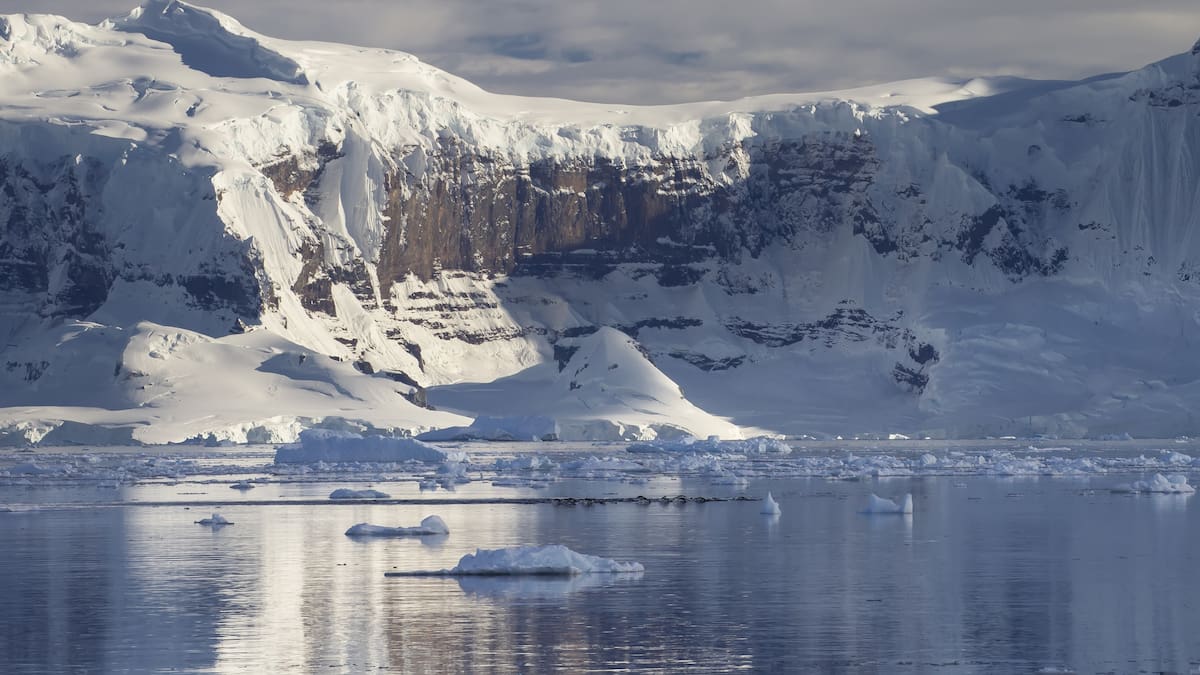The research was led by Naomi Ochwat, a University of Colorado glaciologist, who had been studying other ice formations in the region when she noticed in satellite photos just how quickly Hektoria seemed to be vanishing. She told Scambos they needed to investigate what was happening.
Ochwat, Scambos and their colleagues found that Hektoria shrank by about 16 miles (25.7km) between January 2022 and March 2023. That retreat included a two-month span when it diminished by about five miles (8km).
Ochwat said she got goose bumps thinking back to her last visit, when she flew over the site in February 2024 and saw what had happened to the river of ice once the size of Philadelphia.
“What was left was just this mushed-up mélange of all these icebergs,” she recalled. “It was Hektoria’s remains. … It was just this blanket of these icebergs that were very jagged and overturned.”
The chain of events leading to Hektoria’s demise started in the ocean.
Hektoria is a tidewater glacier, meaning it flows across land before ending in the sea. After rising temperatures reduced the amount of sea ice in the bay abutting the glacier, waves broke down ice fastened to the coastline that had protected Hektoria. And, without that buffer, the floating end of the glacier began cracking and shedding icebergs into the ocean.
“When you remove that force,” Ochwat said, “you start to allow the dominos to fall.” After the glacier lost its floating portion, the rest began to thin. A gently sloping plain under the glacier allowed the ocean to seep in, causing the glacier to bob and break up quickly, she added.
But Christine Batchelor, an ice sheet scientist at Newcastle University who was not involved in the paper, said there is disagreement in the glaciological community about the glacier’s grounding zone – that is, the spot under the ice where the ground ends and the ice begins floating.
If the grounding zone is more inland than the paper suggests, that would mean most of Hektoria’s ice was already bobbing in the water.
“If this section of the ice sheet was floating, the main finding of this work would instead be that icebergs broke off from an ice shelf, which is much less unusual behaviour,” Batchelor said.
But Ochwat said the fact that seismic sensors picked up on a series of earthquakes while Hektoria was in retreat suggests the ice had been resting on bedrock. “Because that ice is touching the Earth, we get earthquakes.”
The research team’s next goal is to see if any other Antarctic glaciers are also sitting on slick, shallow beds – and are also vulnerable to runaway retreat.
“That is our next research target,” Scambos said.
Sign up to Herald Premium Editor’s Picks, delivered straight to your inbox every Friday. Editor-in-Chief Murray Kirkness picks the week’s best features, interviews and investigations. Sign up for Herald Premium here.

